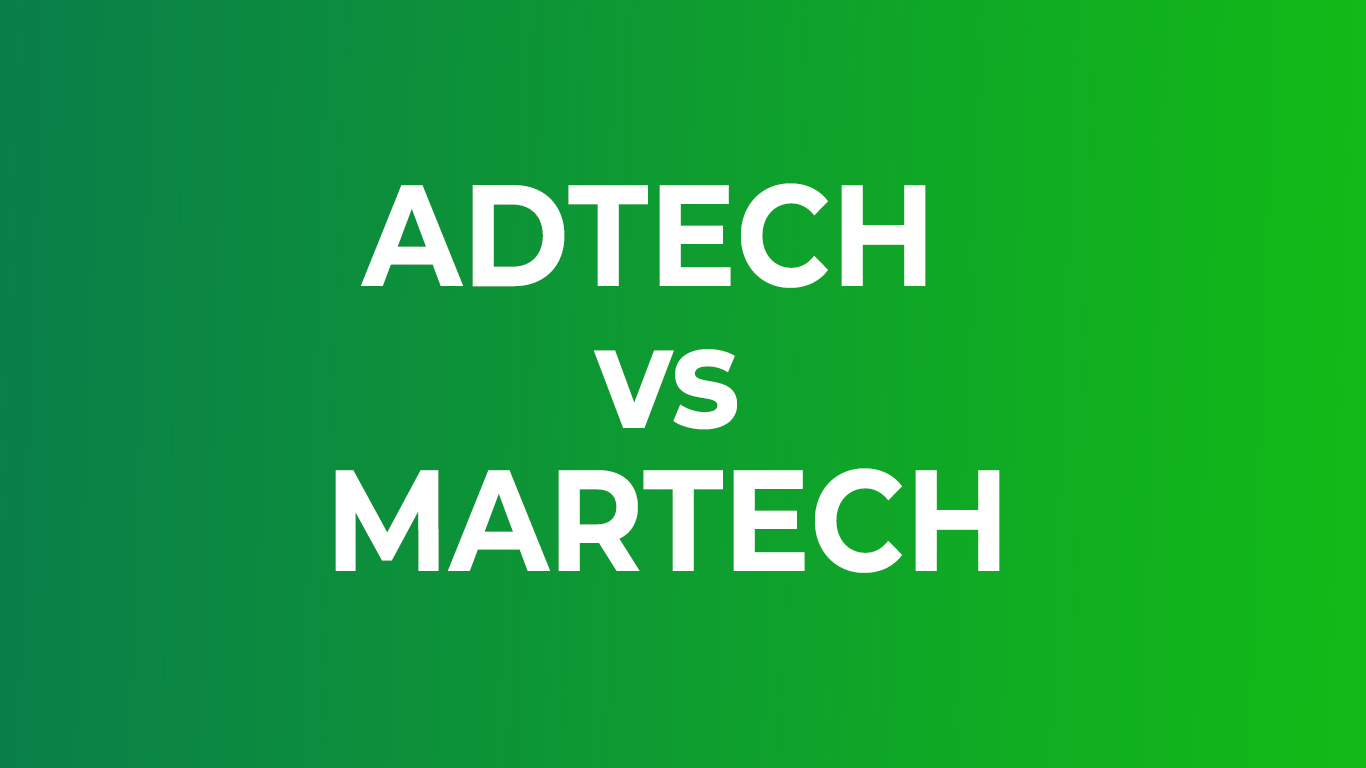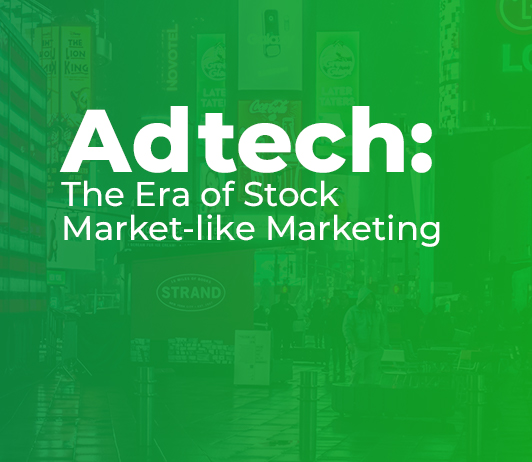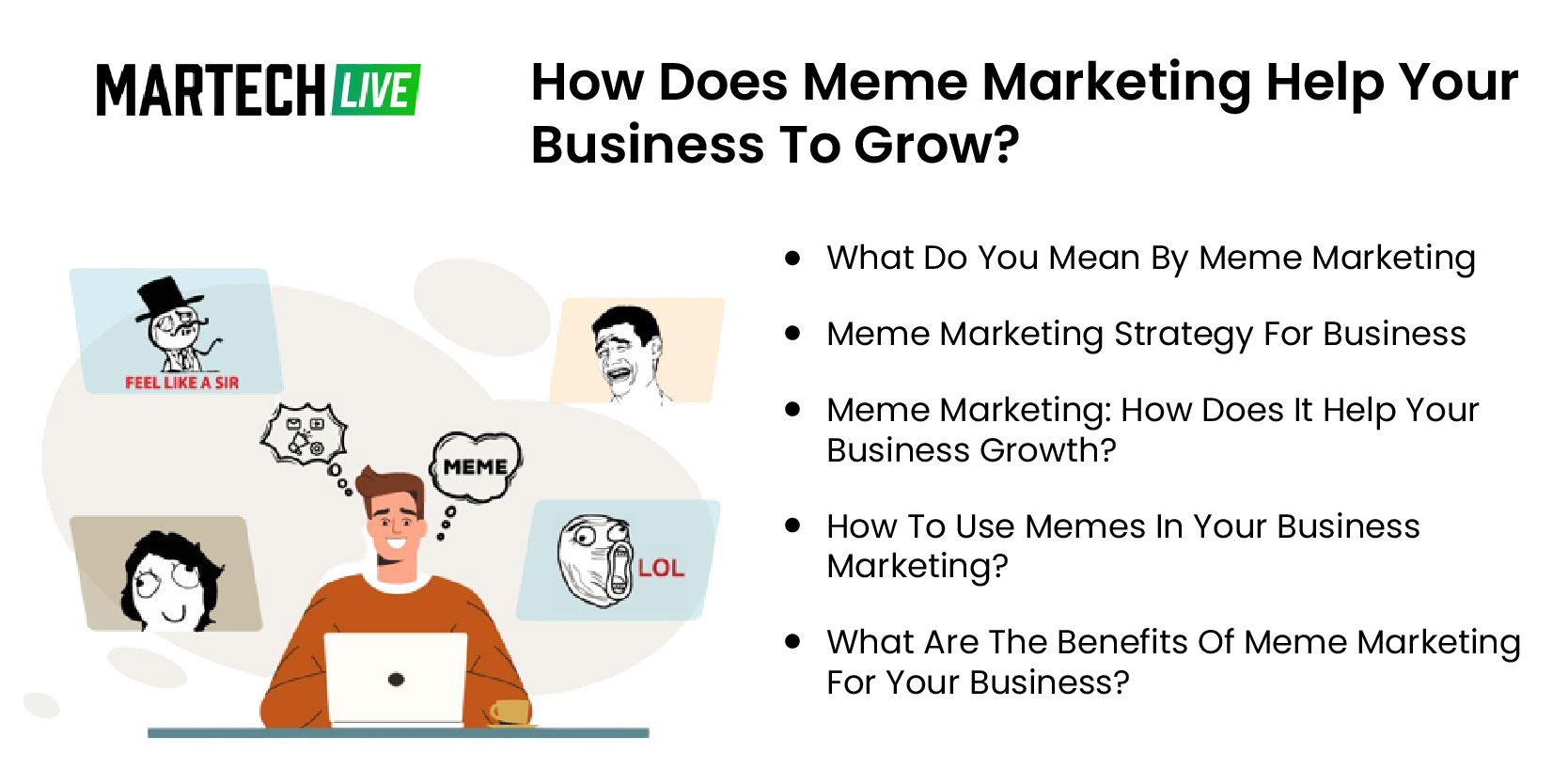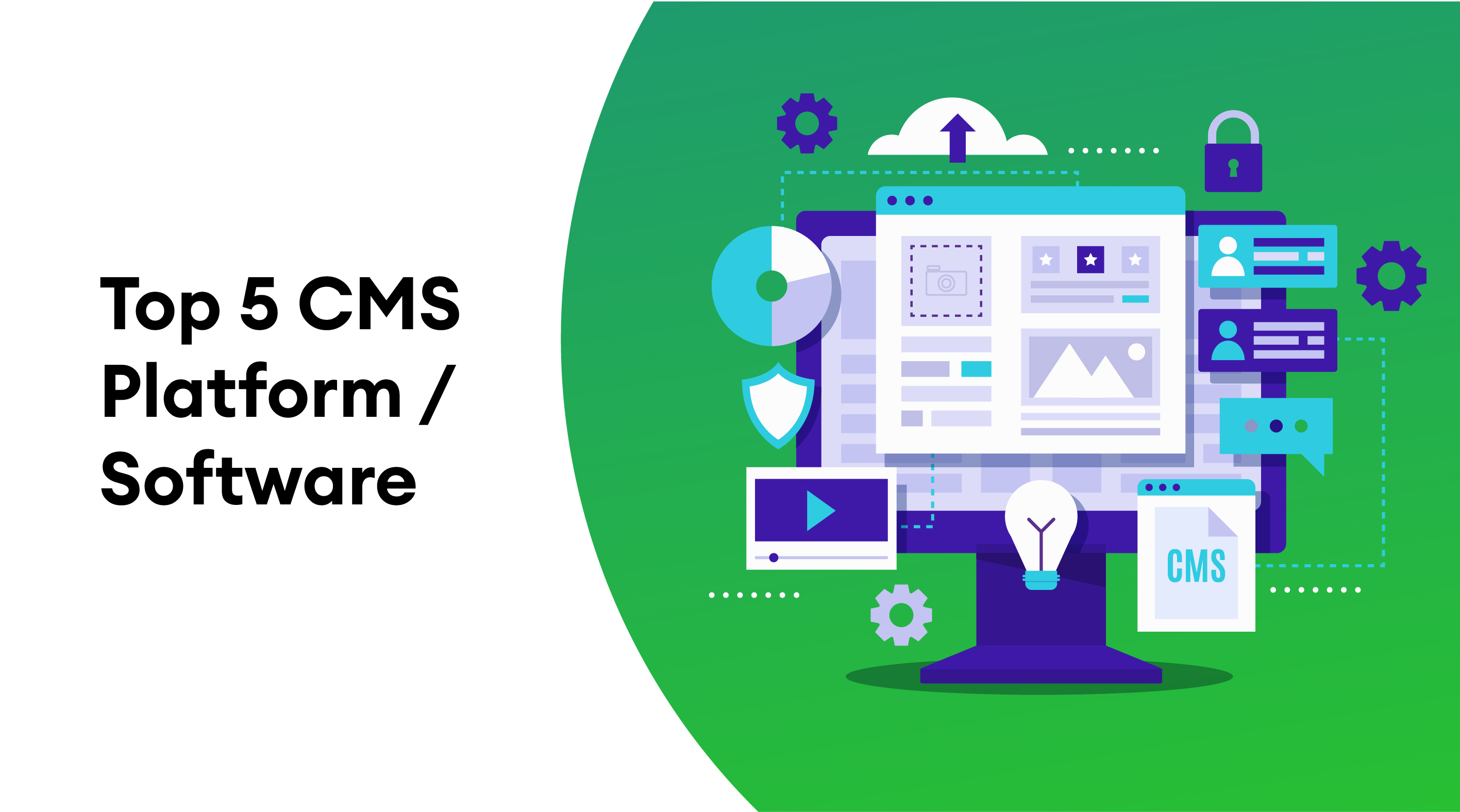Inside Adtech’s Complex Ecosystem
Though the nature of advertising migrated from printing to the internet, the underlying intention of the advertisement industry remains the same — to focus and target audiences with a lucid brand message and convert that particular audience into customers.
The only thing that has changed is the premise. There is no point in getting into teraflop calculations of how and why we have come to a place where advertising is being done on the web. It is quite simple — you need to target where people are, not where they are not. And people are all over the internet, and even when they are on the road, their heads are sunken into smart gadgets. That being the case, advertising on the internet sounds like a logical way of scaling up sales for your business.
The industrial revolution’s conclusion — which had its closure in the mid-18th century — signaled a grand beginning of the advertising trend. The revolution provided an impetus and encouraged people to conduct business, bringing forth economic and social prosperity for all.
Since then, history has been telling us that disruptive paradigm business models not only lays the groundwork for advanced and faster advertising activities, but it also has dramatically changed the way we look at advertising.
For a moment, think about all the advertising we have witnessed before the emergence of Adtech. Advertisements were thrown at us in the form of banners, print media, radio announcements, billboards, television, etc. Traditional advertisings were targeted at a mass audience; they were not precise and failed to considered audiences’ likes and dislikes. Now things have changed. Technology has decked out the advertising sector with artificial intelligence and machine learning, where advertisers are bringing, placing, and tracing their advertising efforts seamlessly.
The holy wedlock between advertising and technology — what we refer to as an Adtech — has now equipped advertisers with interactive tools that reach on a more personal level of customers. That’s Adtech for you.
Adtech is a convoluted system. In order to understand the mechanism of the Adtech ecosystem, let me walk you through a jungle of jargon.
Each term explained below leads to an understanding of the Adtech ecosystem.
Programmatic Advertising
Programmatic advertising refers to the mechanism of computer-aided trading of advertisements on the internet.
It automates the buying and selling of advertisement space, unlike conventional advertising process that engages tenders, negotiations, human resources, and all that non-automated jazz.
Essentially, it brings together advertisers and publishers at a single place and allows them to do business.
At the heart of programmatic advertising is a sophisticated artificial intelligence and machine learning algorithm that procure a set of user impressions involving user data point, browsing behavior, instance profiling, personal preference, among others. Using these parameters, an advertiser can gauge and target the right audience using data-driven decisions without any pretentious guesstimation.
The fact that most professionals who are dipping toes into the Adtech fail to understand, or maybe admit, is — programmatic advertising is neither a platform nor an online space where you can enter and fool around with metrics and indulge in a fantasy of racking up overwhelming internet traffic.
Adtech is many things. Programmatic advertising is just a part of the Adtech ecosystem. It can be viewed as a mechanism, framework, or set of rules that teach how to play the real game of online advertisement trading.
But, We Were Already Doing it Manually
That is the catch. Gone are the days of bustling advertising boardrooms, where market wizards played with their wands to devise tantalizing campaigns for their clients. Now is the time of a new league of marketers where they have taken the industry to new heights with their novel approaches. Modern age marketers are Adtech-crazy. They don’t suit up anymore to face the real world for their marketing campaigns; they simply click or hit a button to see how their campaigns are performing in the virtual world trained by algorithms.
Making a purchase and determining an ad position necessitates analytical cogitation. Manual advertising campaigns were snail-paced, unreliable, and worked under the principle of hit-or-miss. Besides, in AdTech, an ad insertion order and ad rate negotiation are done in an automated manner, which expedites the entire ad campaigning process.
Ad Exchange
For carrying out an online advertising campaign, and in order for programmatic advertising to work, there are several facets of Adtech that come into play, and Ad exchange is one of them.
Think of programmatic advertising as algorithmic instructions that guide advertisers and publishers to buy and sell ads, respectively. Here, ad exchange acts as a platform that abides by these instructions and creates a well-orchestrated framework that puts in motion the ad tech business interaction.
In simple language, an Ad exchange is a marketplace where advertisers and publishers enter the field to transact ad inventory.
Hey, Then What is an Ad Network?
The ad network is connected to various websites from where it gathers inventories and sells it to advertisers. They typically collect inventory and group them in accordance with multiple parameters.
The ad network’s way of reaching to online users is not as clearly defined as an ad exchange’s approach. Ad networks target users based on RON (Run-On-Site), ROS (Run-On-Network), type of browser, location, etc. That being the case, ad networks just focus on websites. They fail to assess who the online users are, as they focus on relevant sites in an attempt to find the right user. On the other hand, ad exchanges rely on cookies and other analytical tools; thus, it ensures that the right ads are conveyed to the right users.
Unlike ad exchange, which uses real-time bidding, the ad network’s algorithm decides the price of a particular inventory to be sold to an advertiser. Besides, the relevance of inventory impacts the ad network’s usefulness, whereas the competition among bidders make ad exchanges dynamic and effective if utilized with forethought.
As you can see, the real-time bidding opportunity makes the Adtech ecosystem an expedite advertising model, setting it apart from the traditional advertising model.
Which now brings our attention to real-time bidding.
Real-Time Bidding
Real-time bidding refers to the impression-based inventory buying and selling process between an advertiser and a publisher. An auction — where advertisers bid on impressions they wish to get — selects the advertiser with the highest bidder and displays its ad on the publisher’s site. This all happens in an automated manner, just like financial markets. However, not all programmatic advertising processes depend on real-time bidding. For instance, the direct programmatic advertising process works under the plain agreement between advertisers and publishers, where both settle on the fixed inventory price for an assured number of impressions.
Demand-Side Platform
The demand-side platform (DSP) is an advertiser’s playfield where purchasing and managing inventories through a single interface, but numerous media spaces, are carried out. This is achieved by algorithms characterized by market metrics and the magnitude of online impressions. To speak simply, advertisers using DSP can buy advertising space from a publisher’s site in an automated fashion.
Great. But How Demand-Side Platform Works?
At its heart, the DSP grants wide-ranging access and management of digital inventory utilizing various ad exchange sources and supply-side platforms (SSPs).
A typical advertising effort involves an advertiser (who wants to show the ad), a publisher (where the ad will be displayed), and a user (the one who will view the ad). In this transaction, to finally get the ad at a place and decide on price is a bit lengthy course of action.
The Architecture of DSP
Superficially, the DSP appears to be simply a platform or an interface where advertisers buy, track, assess, and keep tabs on their advertising campaign. But DSPs are much more than that. Let us break down the DSP and get a picture of how DSP component plays a role in the architecture.
-
Integration
First things first. For DSPs to start functioning, they need to connect with other entities engaged in the Adtech ecosystem. They generally connect with SSPs and ad exchanges. Besides, they also have access to data management platforms to improve audience targeting and analytics tools to measure on-board performance.
-
Bidder:
Bidder plays a crucial role in estimating the SSP inventory so that it sets the right bid amount during the real-time bidding auctions. Ideally, DSP houses various bidders from different locations and also makes sure that those bidders communicate with DSPs promptly. It also foresees inventory price by dint of historical data and predicts the traffic inflow and click-through-rate.
-
User Interface and Database:
DSPs have superseded ad networks, and their user-friendly interface is one of many advantages for that reason. A user interface allows advertisers to track and preview their performance. By using advanced software tools, DSP’s user interface enables setting up targeting goals, ad placing, campaign tracking, etc. On the flip side, the user database paves the way for advertisers to get a glimpse of ads viewed by users and their respective categories.
-
Campaign Tracker:
You will view the campaign tracker on a user interface. It typically collects data points and impressions, translates them into statistical and useful data, and then sends it to reporting database for making it representable. Using campaign trackers, advertisers can know where they are and how far they should go.
-
Reporting Database:
The reporting database is responsible for gathering all analytical data generated by the campaign tracker. It converts them into reports to help advertisers evaluate their entire performance.
Hold On, DSP Sounds Like Ad Network.
No. DSPs have enhanced the functions of ad networks — providing access to a broad range of inventories and offering targeting possibilities in a more sophisticated fashion.
To learn the difference between ad networks and DSPs, think about their position in this Adtech ecosystem. You will find ad networks sitting in the middle of everything. An ad network is simply a vast body of collections of sites where an advertiser can buy space. It acts as an intermediary between advertisers and publishers i.e., DSPs and SSPs.
-
Cost:
The DSP’s pricing structure follows the programmatic buying process, whereas an ad network restricts its cost-feasibility due to fixed prices based on cost-per-impressions.
-
Transparency:
DSPs have the ability to serve with well-defined reports and facilitate hassle-free campaign tracking features. Ad networks, in terms of their output, appear to be shallow. This doesn’t mean ad networks lack inventory; they have a lot. Ad networks tend to present vanity metrics as they, unlike DSPs, are not backed by AI and ML capabilities. As data represented by ad networks lack depth, they become the very picture of an equivocal set of data points that beat around the bush.
-
Access to the Audience:
Ad networks have already established audience groups based on a number of parameters. They typically segment audiences on the grounds of data points and their relevance. However, you cannot tweak the segmentation criterion to comply with your advertising needs. DSPs offer you that — it enables precise audience targeting by means of granular filtering options and customized categories where you can make alterations.
Supply-Side Platform
You can think of SSPs as the flip side of DSPs (Supply-Side Platforms). SSPs work for publishers by helping them to sell advertising inventory. SSPs have various avenues of selling the inventory — it can sell it through ad networks, DSPs, and real-time bidding auctions. SSPs potentially help publishers to sell inventory in an expedite manner by eliminating the need for human intervention.
Enough of Jargons, Let’s Get Down to Business
The Adtech ecosystem is a mere play of programmatic advertising, ad exchanges, ad networks, DSP, SSP, etc. — all working under the auction setting regulated by real-time bidding.
Okay, now that we know what programmatic advertising, an ad exchange, an ad network, DSP, SSP is — let us now understand and how they all work in synergy, making the Adtech ecosystem no lesser complicated than high-frequency trading (HTD) stock market.
It’s quite a common thing that when you use the internet to shop, see, watch, or even simply search something, you come across an advertisement which reflects your internet searching behavior — what, how many times, and how often you searched a particular thing on the internet which brings advertisement to your fore. The advertisement on the internet acts like a ghost that keeps following the user, asking to buy a back cover for a mobile that the user recently purchased on Amazon. Here, Amazon — by dint of Adtech — collects and utilizes user data (cookies) to show up relevant advertisements that a user will consider clicking on. The majority of the internet’s free content (social media platforms, news sites, content providers, etc.) is funded by advertisement. As a result, to convey ads to the right user, Adtech proves to be an effective way for advertisers.
Humans were responsible for performing advertising and publishing efforts. But time and technology disrupted the entire advertising landscape where the number of publishers started piling up, thus making it difficult for both advertisers and publishers to manage the inventory and interact with each other.
Now, the supply-side platform (SSP) and demand-side platform (DSP) are the sole drivers behind the Adtech ecosystem. This modern advertising model rules out the need for human intervention, making it a quicker, transparent, and data-driven strategic approach.
It’s time to jump into the finer details of the Adtech mechanism and paint a picture of how all these jargons fit into the equation.
How Adtech Works
The entire online advertising game begins when a user lands on a website connected to an ad exchange. When you open a website, a bid request gets triggered, including data sets such as demographic information, location, preferences, browsing history, page content interaction, time of the session, thematic preferences, and even the intricacies like cursor movements. A publisher of that website then sends this bid request through SSP to the ad exchange platform. Ad exchange, in turn, lays the groundwork for auction between SSP and DSP, i.e., publishers and advertisers. Further, ad exchange delivers the bid along with other data to several advertisers out there waiting for a response.
Rowing back to basics, DSP is nothing but an advertiser’s centralized way to access empty media spaces. Imagine SSP telling DSP that it has free space on its website and one user has just visited the site. DSP, with the help of and analyzing different parameters, determines if this is the right user to show the advertisement. To clear things out — parameters include: who is the user, is user interested in the advertisement, what are his browsing habits, and all that jazz. It typically examines the user target settings and cookies that include various user data points, as talked before. If DSP thinks that the impression is beneficial, it bids and raises the highest price that the advertiser can pay for displaying the ad on that empty space.
Talking about bidding, it happens instantaneously. The bidding approach can be a bit complex to fathom, as it entails anything and everything that gives a more in-depth insight about the user. The bid’s size is generally ascertained using probabilistic methods. It takes into account the user’s data history and has a hunch regarding if the user can click or convert.
It is worth noticing that there are thousands of such bidders and advertisers who obviously want to target the right audience. Hence, when SSP gets all the requests, it selects the highest bidder and displays its advertisement on the publisher’s site.
Believe it or not, this long-drawn process takes place in just a few hundred milliseconds.
The Convergence of Adtech and Martech — Partner in Prime?

If you attempt to dissect the entire marketing industry, you will be left with Adtech and Martech as two supersized chunks. To probe into these chunks is where the line gets blurry and everything seems similar. They both are closely-tied, thus complementing each other.
Both Adtech and Martech encompass a variety of terminologies and interrelated technologies. When it comes to drawing a line between the two, there’s no clear division you could achieve. But the comparison clears the dust off and brings forth a picture of how Adtech and Martech co-exist and how they play almost the same role but with different intentions.
Adtech, as we extensively talked about in this article, deals with a slew of platforms pertaining to technology integrated into advertising. Just for the sake of revision – programmatic advertising, ad exchange, ad network, DSP, SSP, RTB, etc. are the components through which Adtech works.
Martech, just like its name, blends marketing and technology and makes it a short, crisp, fast, and technology-friendly approach for carrying out digital marketing efforts. Martech’s ecosystem comprises techniques that cater to digital analytics tools, customer data platforms, customer relationship management, content marketing, email marketing, SEO and content optimization tools, customer data analysis, etc. It typically automates marketing processes and workflows through technologies.
The above premise offers a glimpse of Adtech and Martech’s vantage point that rests at endpoints of sales funnel — they have their eyes on different target audiences. Adtech, considering its manner of operation and intention, targets random people whom it thinks can turn into potential customers. On the other hand, Martech manages and works upon its existing and prospective customers. It finds novel ways to continue a relationship with a known customer.
Martech, at its very core, weighs customer’s data history against other analytical data sets to become conscious of customer behavior patterns, which further aids marketers to chalk out a custom-fit marketing campaign.
Besides, Adtech is restricted to a unidirectional communication medium, i.e., only brands can communicate with their audiences; there’s no way the audience can interact with brands in Adtech. The only solicited response in the Adtech industry is — audiences turning into customers.
As a marketer in this digital age — where data sits at the center and dictates a relationship between a user and your business — a sound and distinct awareness of Adtech and Martech are of utmost importance to forge a robust digital footprint in the marketing sphere.
Adtech and Martech are increasingly converging, thereby superimposing themselves onto each other into this seemingly juxtaposed marketing landscape. They both will continue to overlap even more as the amount of data that we are storing and using it for our convenience stacks up.
The Future of Adtech
The future is already here. Advancements in artificial intelligence, virtual reality, machine learning, and augmented reality are already shaping the Adtech industry, making it a great fit for modern advertising needs.
Datafication is widening the expanse of Adtech, which is eventually helping businesses of all kinds. Until recently, the traditional advertising model followed rinse and repeat approach where advertisers experimented with their reach, keeping in my mind a product-centric approach. Now the world of advertisement has tilted toward a data-centric business approach.
Data is everything — it has characterized humans with selling points for businesses. If that sounds like a plot written by data-sucking AI bots who are planning to conquer the world, let me assure you that is not the case. Adtech is just a result of data-hungry advertisers and convenience-seeking customers.







